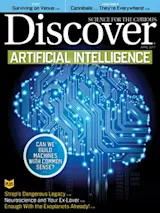Nestled among Seattle’s gleaming lights on a gloomy September day, a single nonprofit wants to change the world, one computer at a time. Its researchers hope to transform the way machines perceive the world: to have them not only see it, but understand what they’re seeing.
At the Allen Institute for Artificial Intelligence (AI2), researchers are working on just that. AI2, founded in 2014 by Microsoft visionary Paul Allen, is the nation’s largest nonprofit AI research institute. Its campus juts into the northern arm of Lake Union, sharing the waterfront with warehouses and crowded marinas. Across the lake, dozens of cranes rise above the Seattle skyline — visual reminders of the city’s ongoing tech boom. At AI2, unshackled by profit-obsessed boardrooms, the mandate from its CEO Oren Etzioni is simple: Confront the grandest challenges in artificial intelligence research and serve the common good, profits be damned.
AI2’s office atmosphere matches ...















